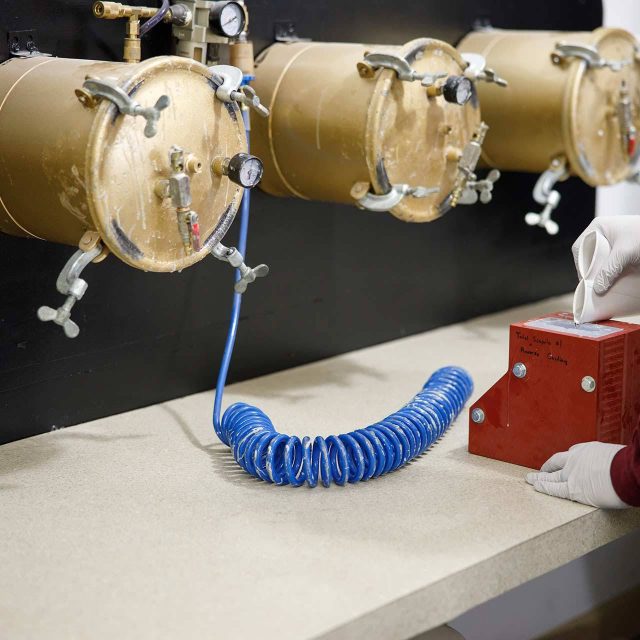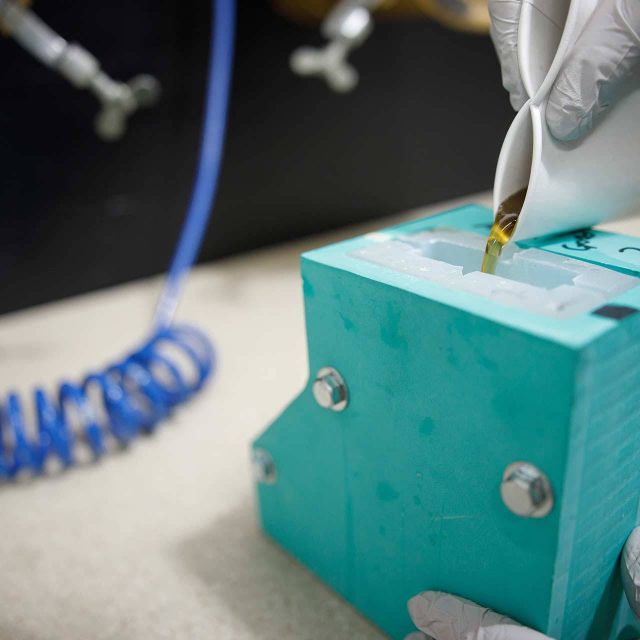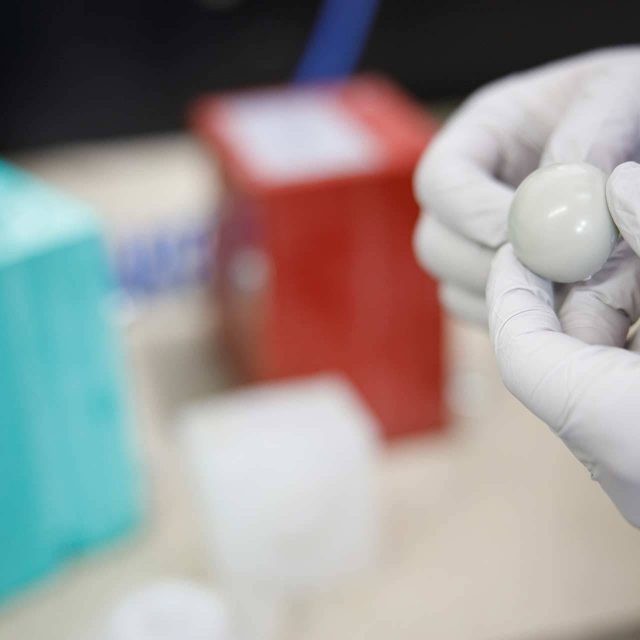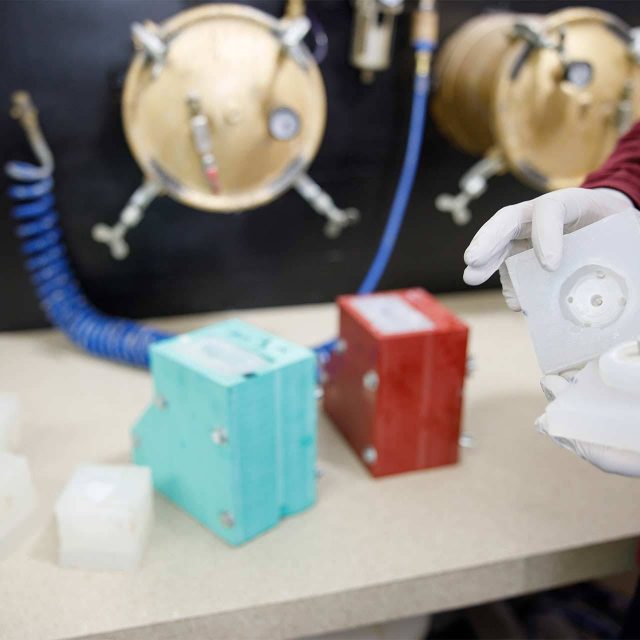Molded and Casted Parts
Cost-Effective Soft-Tooling Options
For small quantity production runs, the initial investment costs for injection molding tools or “hard tools” can be cost-prohibitive. To solve this problem and achieve an accurate replica of physical objects, “soft-tooling” is often our chosen method at OsteoShape.
Soft-tooling also allows for complex shapes to be cast. The flexibility of silicone prevents parts with undercuts from being trapped within a hard tool.
Making molds requires a “Master” of the end product. Masters can be finished products such as implants or rapid prototypes or can be bones that are printed in-house on our rapid prototype machine.
Periodic replacement of silicone tools is necessary, due to thermal damage caused by the urethane material during the curing stage of casting.
Frequently Asked Questions
How long will it take?
Each project is unique. For complex projects involving design and development, we will first schedule a virtual meeting with you and then provide a “scope of work” document detailing a timeline for the steps to completion.
Most projects require prototype approval, which can occasionally lead to delays depending on your company’s approval process. Changes to the scope of work can also delay the project, so a thorough understanding of the project upfront is critical.
Our team will work with you throughout the process to ensure unnecessary delays don’t occur.
How much will it cost?
We quote all of our work based on time and materials. As a general rule, the first model is always the most expensive model.
Who does the work and where is it done?
Phil and his team are all experienced in the creation of 3D printing, masters, molds, high-quality paintwork, and finishes. We have made bone models and implant replicas for years at our on-site facilities with a variety of equipment and processes located in Warsaw, Indiana.
Any outside work is completed in the USA, generally in close proximity to our Indiana location to save time and reduce shipping expenses.
Can you work with an engineering file?
Yes, we routinely work with Unigraphics, Solidwork, Parasolid, and mesh files provided by customers and have experienced orthopedic engineering resources to assist you.
Starting with your files is the easiest way for us to begin work.
The Process
How Does it Work?
Define Project Scope
We start with your description of the need and create a written project scope. The scope of work can be done in person or virtually.
Design & Development
Our design & development team will create a rendering of how your product will work in your target environment.
Prototype
With most of our projects, a prototype is produced from the approved renderings generated during the design & development phase.
Production
After approval of the prototype, we will fabricate the predetermined quantity of your model, sales kit, exhibit, educational tools, or other solution.
Continued Support
Our production system ensures each customer has a designated cart to ensure reproducibility and easy future reorders and support.
Related Case Studies
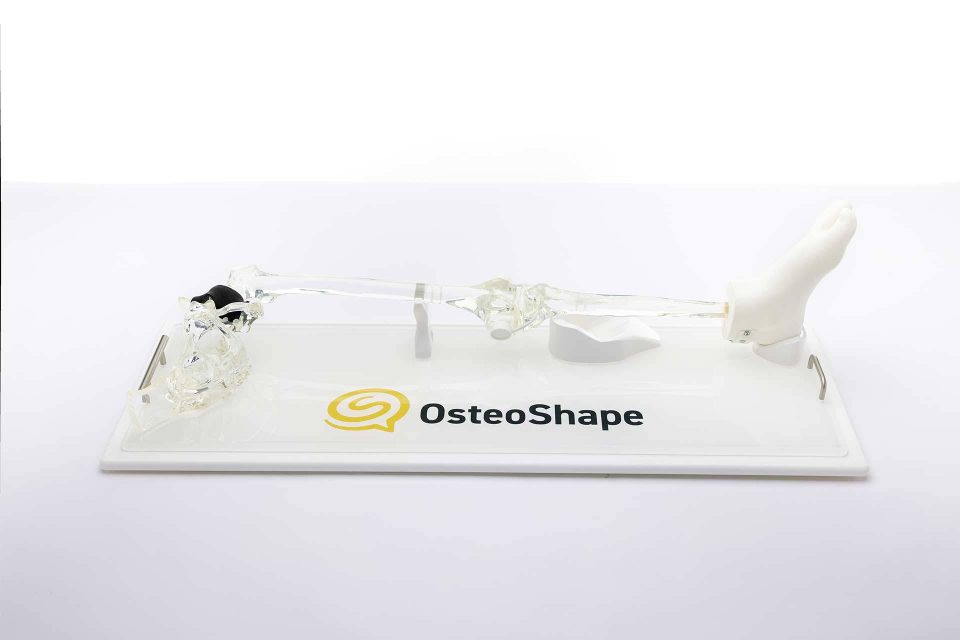
Robotic Knee Platform
Learn More
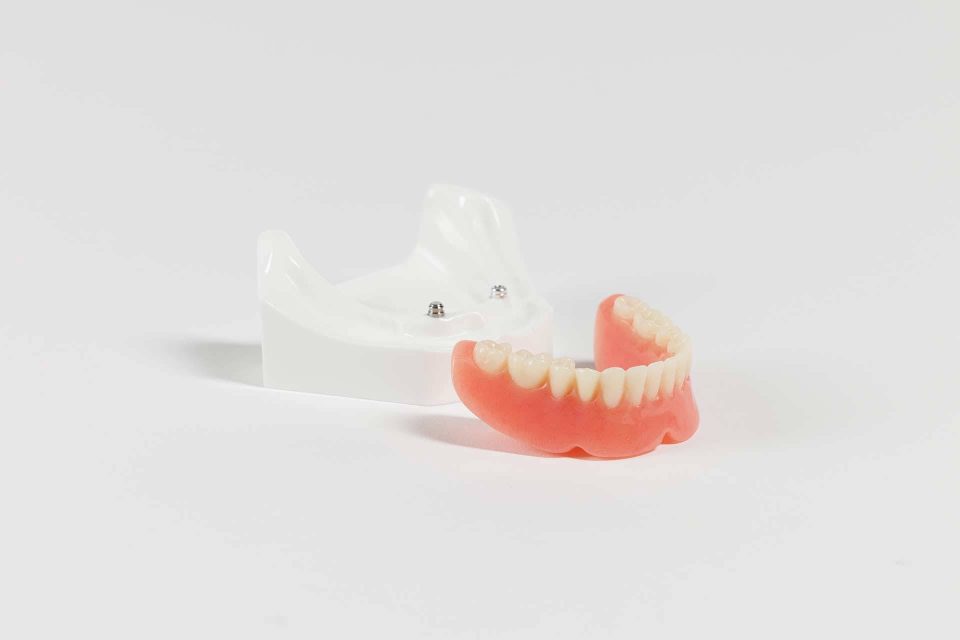
Dental Implant Education Model
Learn More

Oncology and Salvage Arthroplasty Exhibit
Learn More
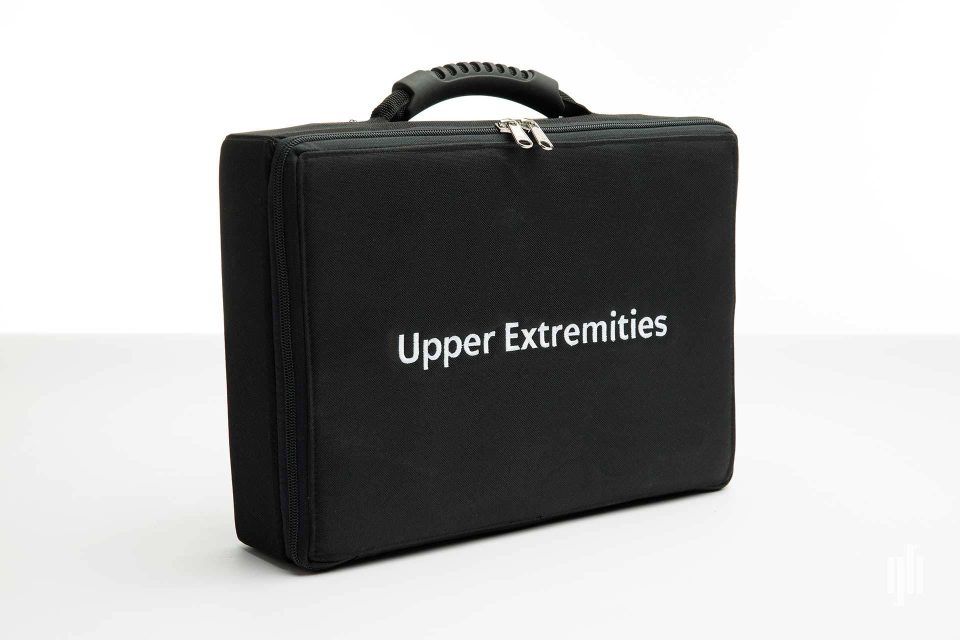
Upper Extremities Sales Kits
Learn More
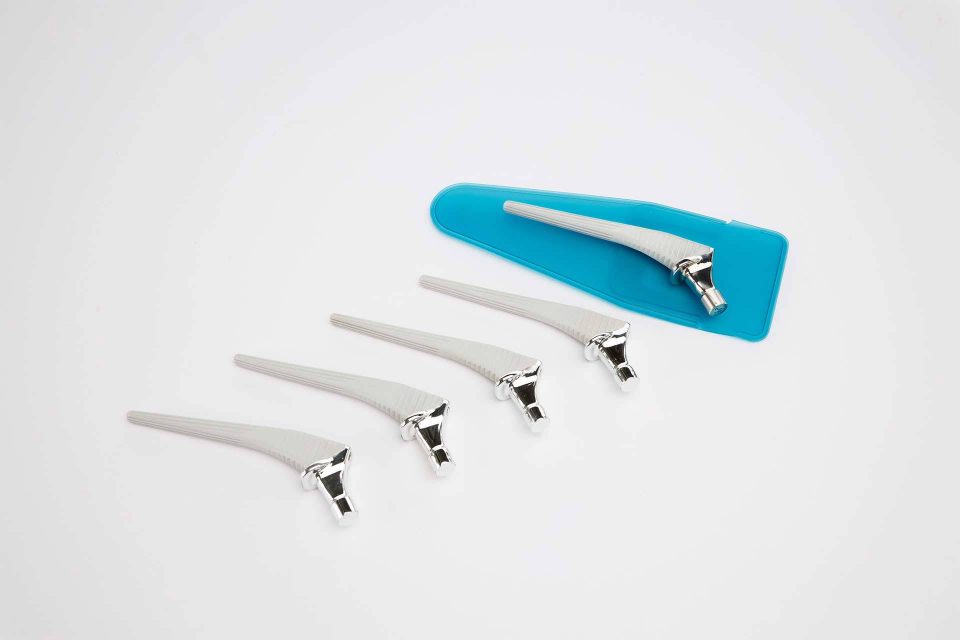
Hip Stem & Acetabular Cup Replicas
Learn More
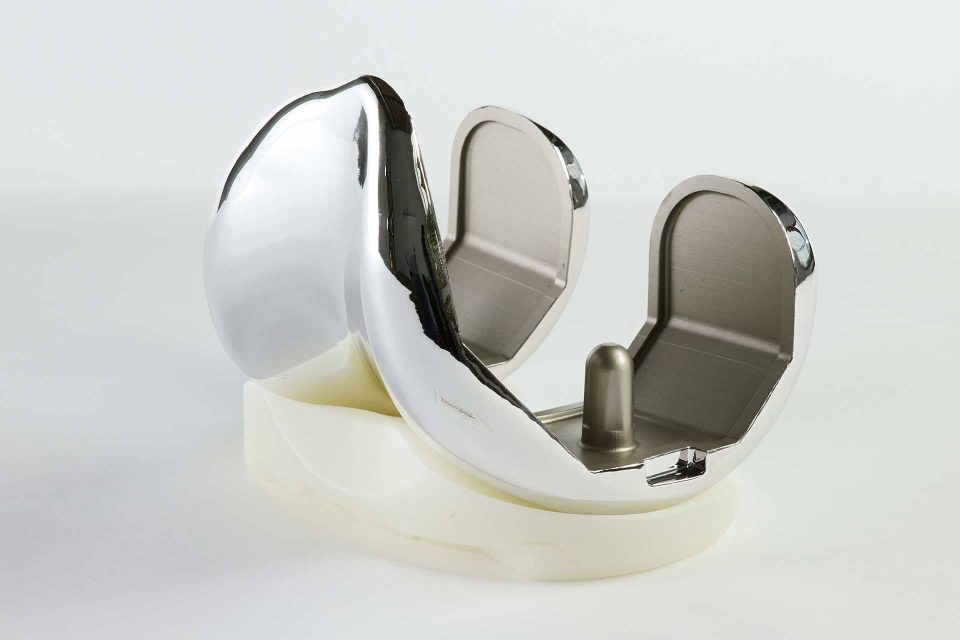
Oversized Implant Models of the Knee
Learn More
